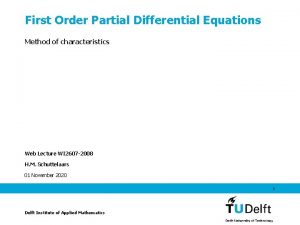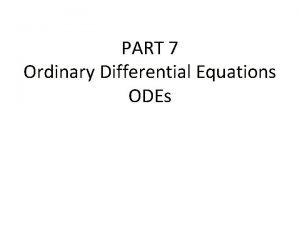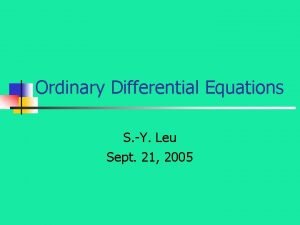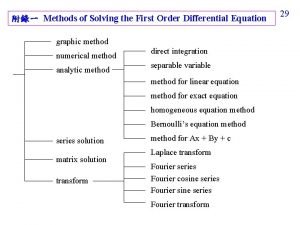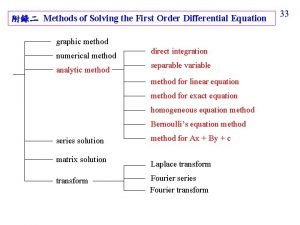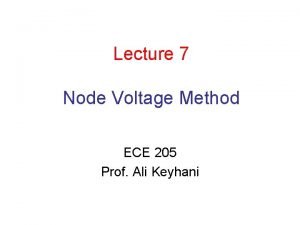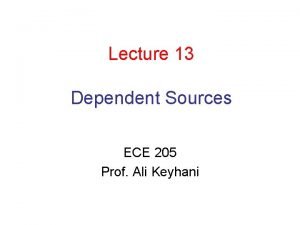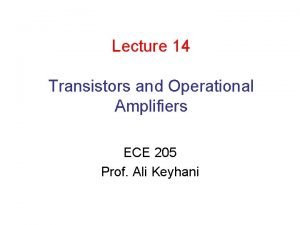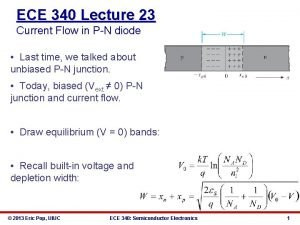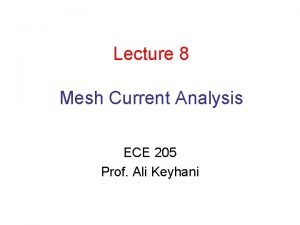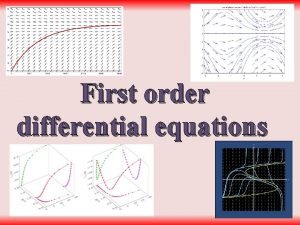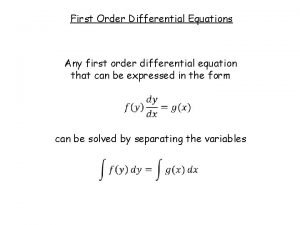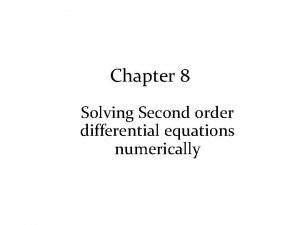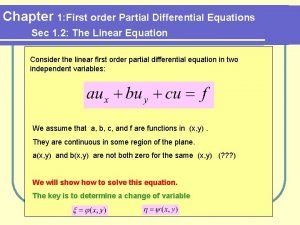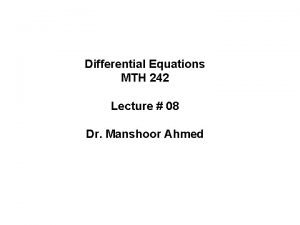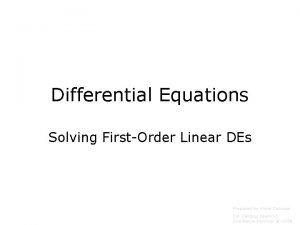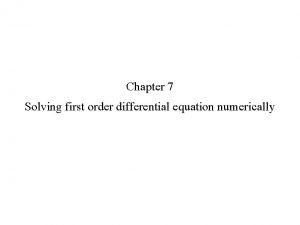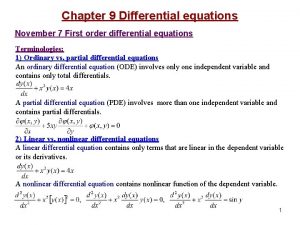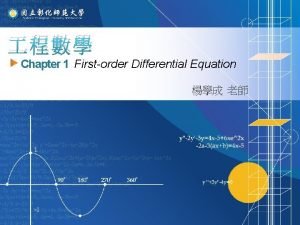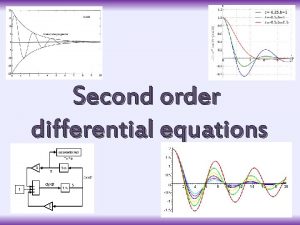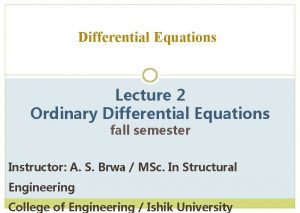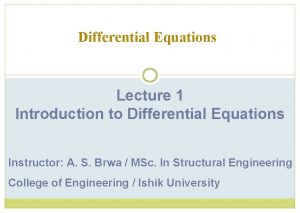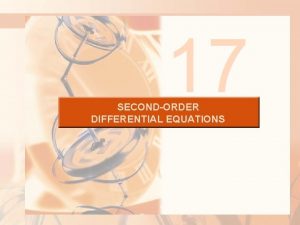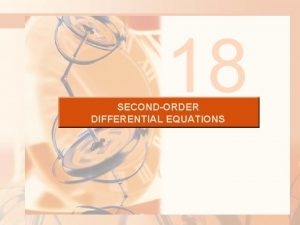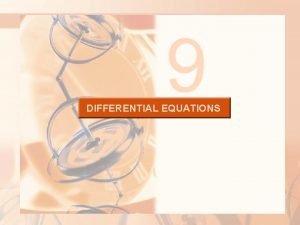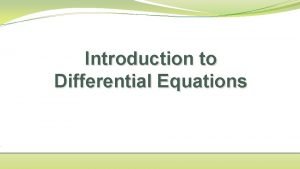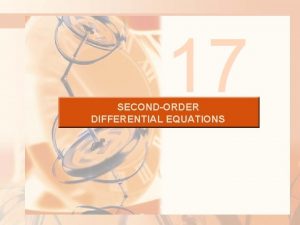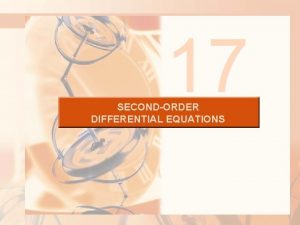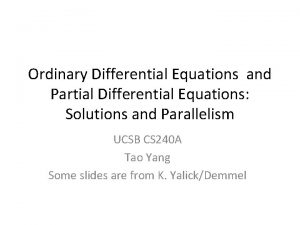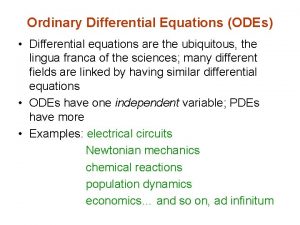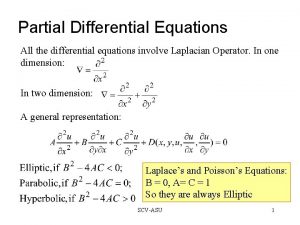Lecture 19 First Order Differential Equations ECE 205



















- Slides: 19

Lecture 19 First Order Differential Equations ECE 205 Prof. Ali Keyhani

RC Circuits • RC circuit contains linear resistors and single capacitor • The resistors and sources are replaced by their equivalent Th’evenin circuit

RC Circuits Capacitor current: Substituting the capacitor current in the KVL equation yields the first order differential equation for the RC circuit: Response of the equation depends on: – The input voltage v. T – The value of the constant RTC – The initial condition : value of v(0)

Zero Input Response • The value of v(0) relates to the stores energy in the device (capacitor) and can cause the system to have a nonzero response even if v. T=0 • Zero input response: all the input sources are set to zero thus v. T=0: • The above equation is a homogeneous equation and has a solution in the form of an exponential:

Zero Input Response Substituting the response in the original equation: The only term that can be zero and thus satisfy the above equation is: Therefore the equation becomes:

Zero Input Response From the initial condition K is found: First order RC circuit zero input response

RL Circuit • RL circuit contains linear resistors and single inductor • The resistors and sources are replaced by their equivalent Norton circuit

RL Circuit Inductor voltage: Substituting the inductor voltage in the KCL equation yields the first order differential equation for the RL circuit:

Zero Input Response Setting the input current to zero gives the zero input response: The same procedure as RC circuit is repeated to find the response of the circuit:

Example 1 The switch has been on position 1 for a long time. At t=0 the switch has brought to position 2. Determine the current through capacitor for t>0.

Example 1 Solution: At the instant of switching the capacitor was charged to the battery voltage 20 V. hence: the voltage of the capacitor: the capacitor current:

Example 2 find the response of the resistor currents if: R 1=3 kΩ, R 2=6 kΩ, L 1=20 m. H, L 2=30 m. H, i. L(0)=50 m. A

Example 2 Solution:

Step Response • Assuming the input to the system is a step function the equation of the RC circuit will be: • Superposition is used to find the response. The response consists of two parts: – Natural response: response when input is zero – Forced response: response when input is a step function

RC Circuit Step Response Step response of the first order RC circuit

RL Circuit Step Response The same procedure of RC is followed for the RL circuit Natural response: Forced response: IF=IA Initial Condition:

Step Response Natural response is the zero input response: Forced response is the solution to the equation: VF(t)=VA is a solution to this equation. Therefore the solution of the system will be: Initial condition is used to find the constant K:

Example 3 Find the response the RC circuit

Example 3 Solution: Parameters of the Thevenin circuit:
 Method of characteristics
Method of characteristics Ode general solutions
Ode general solutions First order ordinary differential equations
First order ordinary differential equations First order ordinary differential equations
First order ordinary differential equations Separable partial differential equations
Separable partial differential equations First order linear equation
First order linear equation Node voltage
Node voltage Ece 205
Ece 205 Ece 205
Ece 205 Uiuc ece 340
Uiuc ece 340 Mesh current method
Mesh current method Solving 1st order differential equations
Solving 1st order differential equations First order odes
First order odes Second order differential equation
Second order differential equation What is a first order equation
What is a first order equation Higher order linear differential equations
Higher order linear differential equations Differential equation solver
Differential equation solver Highest order chapter 7
Highest order chapter 7 First order differential equation chapter 9
First order differential equation chapter 9 First order linear differential equation
First order linear differential equation
